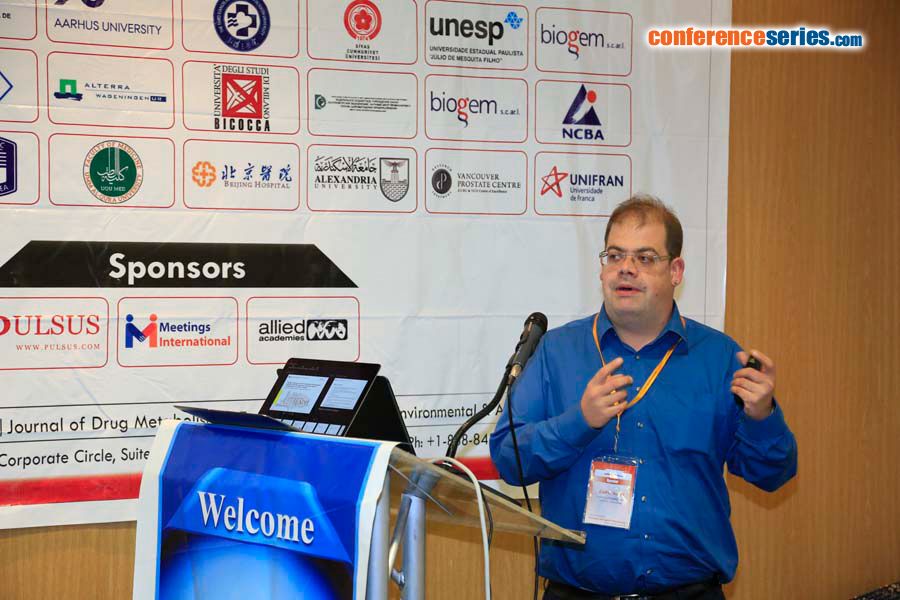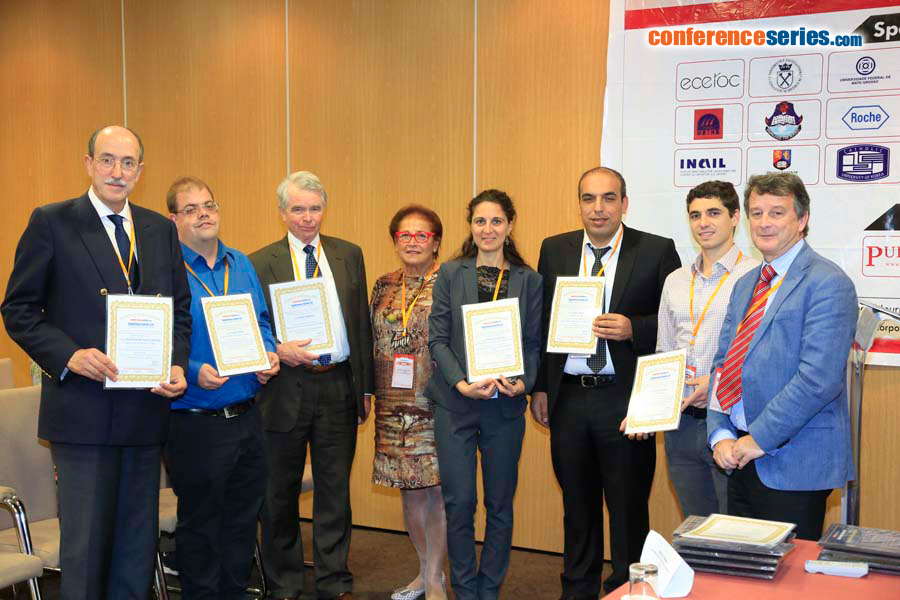Cédric Wernli
University of Applied Science and Arts, Switzerland
Title: Targeted screening of succinic semialdehyde dehydrogenase defi ciency (SSADHD) employing an enzymatic assay for γ-hydroxybutyric acid (GHB) in biofl uids
Biography
Biography: Cédric Wernli
Abstract
Introduction: An enzymatic assay for quantifi cation of γ-hydroxybutyric acid (GHB) in biofl uids can be employed for targeted
screening of succinic semialdehyde dehydrogenase defi ciency (SSADHD) in selected populations. We used a two-tiered study
approach, in which the fi rst study (proof of concept) examined seven urine samples derived from patients with SSADHD and
fi ve controls, and the second study (feasibility study) examined a broader sample population of patients and controls, including
plasma.
Objective: Aim of this study was to evaluate split samples of urine and plasma (anonymized) by enzymatic assay, gas
chromatography alone (proof of concept) and gas chromatography-mass spectrometry, and the results compared.
Method: Multiple detection methods have been developed to detect GHB. We evaluated an enzymatic assay which employs
recombinant GHB dehydrogenase coupled to NADH production, the latter quantifi ed on a Cobas Integra 400 Plus.
Results: In our proof of concept study, we analyzed 12 urine samples (fi ve controls, seven SSADHD) and in the feasibility study,
we evaluated 33 urine samples (23 controls, 10 SSADHD) and 31 plasma samples (14 controls, 17 SSADHD). Th e enzymatic
assay carried out on a routine clinical chemistry analyzer was robust, revealing excellent agreement with instrumental methods
in urine (GC-FID: r=0.997, p ≤ 0.001; GC-MS: r=0.99, p≤ 0.001); however, the assay slightly over-estimated GHB levels in
plasma, especially those in which GHB levels were low. Conversely, correlations for the enzymatic assay with comparator
methods for higher plasma GHB levels were excellent (GC-MS; r=0.993, p≤ 0.001).
Conclusion: We have evaluated the capacity of this enzymatic assay to identify patients with SSADHD via quantitation of GHB.
Th e data suggests that the enzymatic assay may be a suitable screening method to detect SSADHD in selected populations
using urine. In addition, the assay can be used in basic research to elucidate the mechanism of the underlying disease or
monitor GHB-levels for the evaluation of drug candidates.





